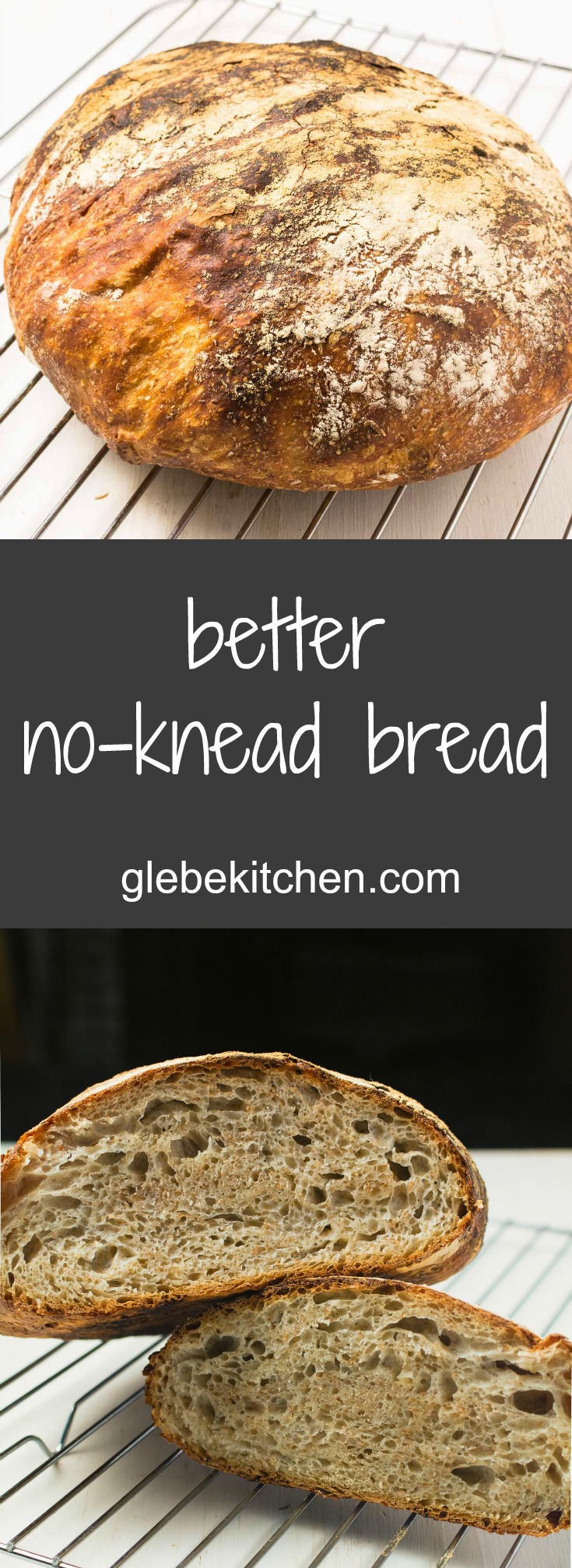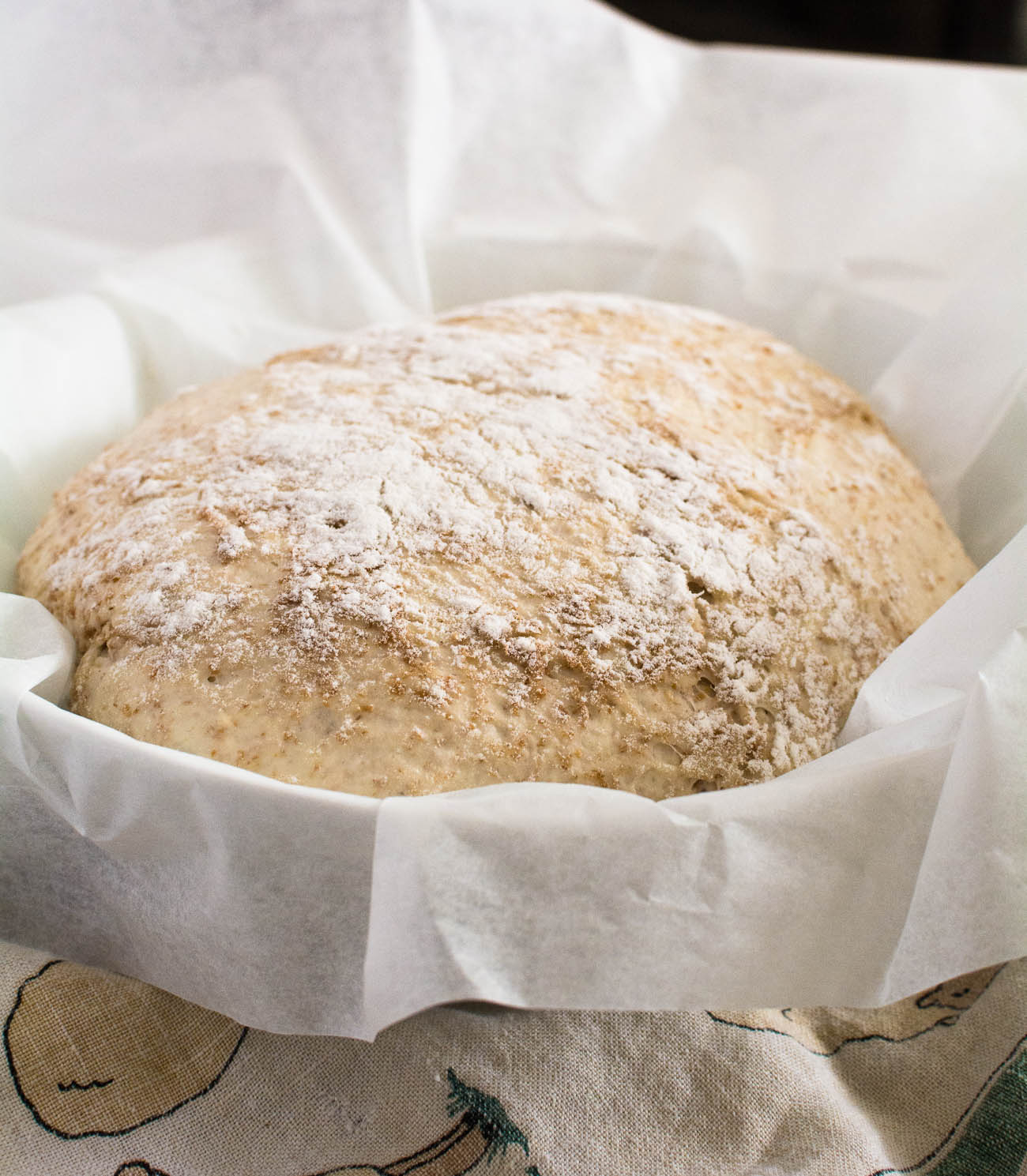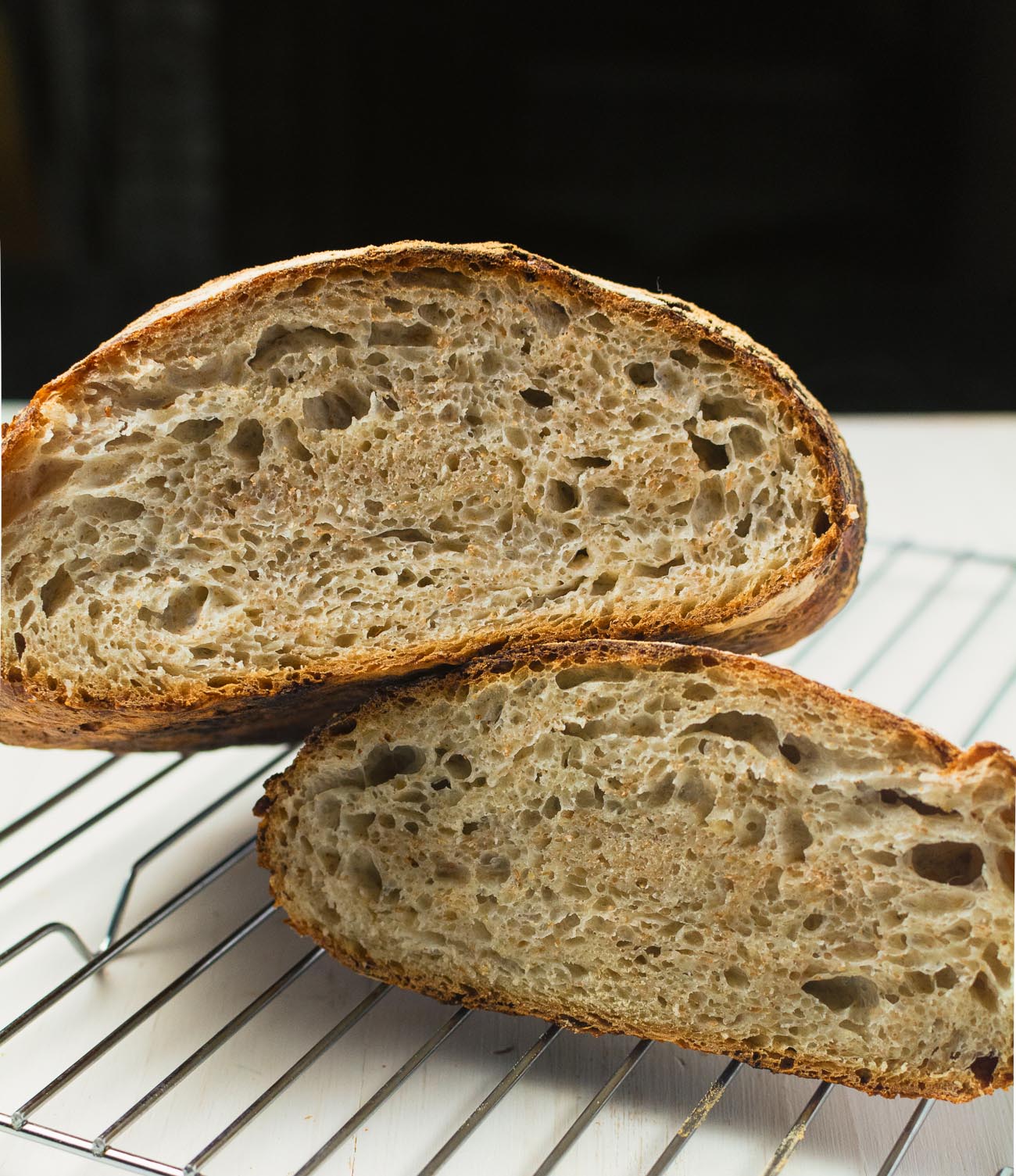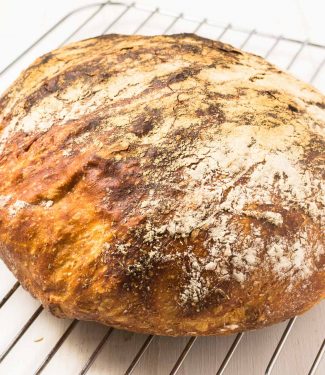The beauty of this recipe is it teaches the benefit of longer fermentation. This no-knead bread takes about 24 hours to make. Time is a wonderful thing when making bread. Complexity happens. Depth of flavour results. The NY times recipe, as written, is a bit vague. And a bit dangerous. The video has you throwing raw dough into a blazing hot dutch oven. There are holes in the recipe as well. You need to read the comments to understand what is really going on. Here’s the no-knead bread recipe with the benefit of the comments woven in. First off, measuring flour by volume is misguided at best. Bread bakers work by weight. I don’t know what the obsession is with volume is but if you are going to make bread or pizza dough do weigh your ingredients. Maybe professionals can stick their finger into dough and know it’s right. I can’t. Second, understand that proofing is a function of time and temperature. The warmer the room, the faster things happen. The recipe, as written, is for about a 70F room and a 12 to 18 hour initial proof. The real way to tell how your doing is to watch the bubbles forming on the surface of the dough. Bubbles means it’s good to go. Third, tossing the dough in a 500F dutch oven is crazy. I do the second proof with parchment under the dough. When it’s time to bake, I pick up the dough by the parchment and carefully drop it into the dutch oven. Cover it up and into the oven it goes. Safe.
They don’t explain why the dutch oven is important. Professional bread baking ovens maintain high humidity in their ovens. Inject steam in fact. Thomas Keller suggests heating metal chains in the oven and spraying them with water to recreate this. Modern thermostats don’t like that so I don’t recommend it. The dutch oven acts as a moisture trap. The steam that escapes from the dough humidifies the interior of the dough. This allows the bread to rise before the crust sets up. And they don’t talk about the temperature of the bread. Bread is done at around 205-210F. You can’t tell by looking at it. The whole hit it on the bottom and listen to the sound it makes theory I don’t get at all. This makes a pretty good loaf of bread. Not the best I’ve made and certainly not the best I’ve had but pretty good for the little bit of work it takes. It’s a great introduction to bread making – once a few little gaps are filled in. If you must bake by volume the recipe can be found here https://cooking.nytimes.com/recipes/11376-no-knead-bread



